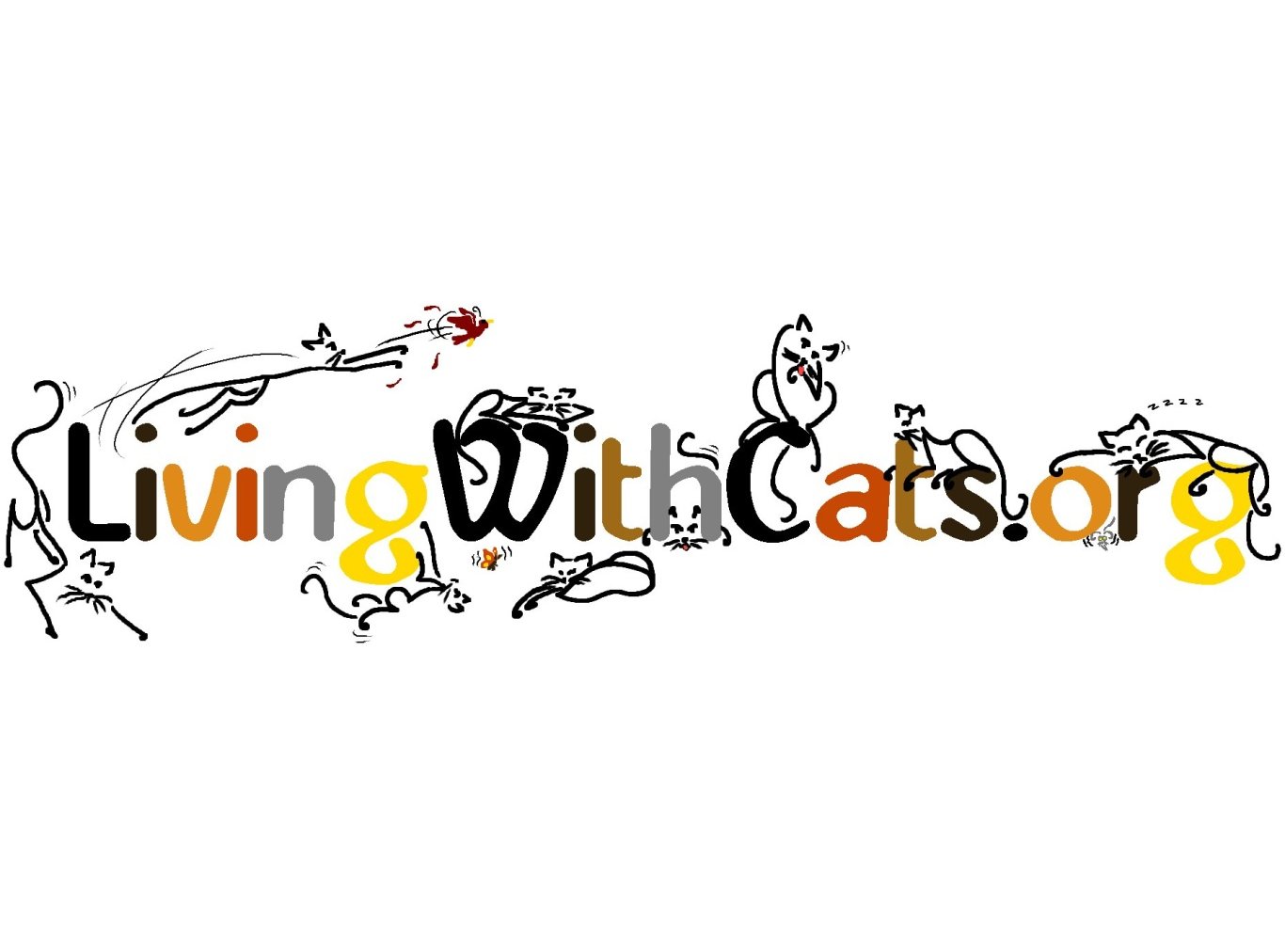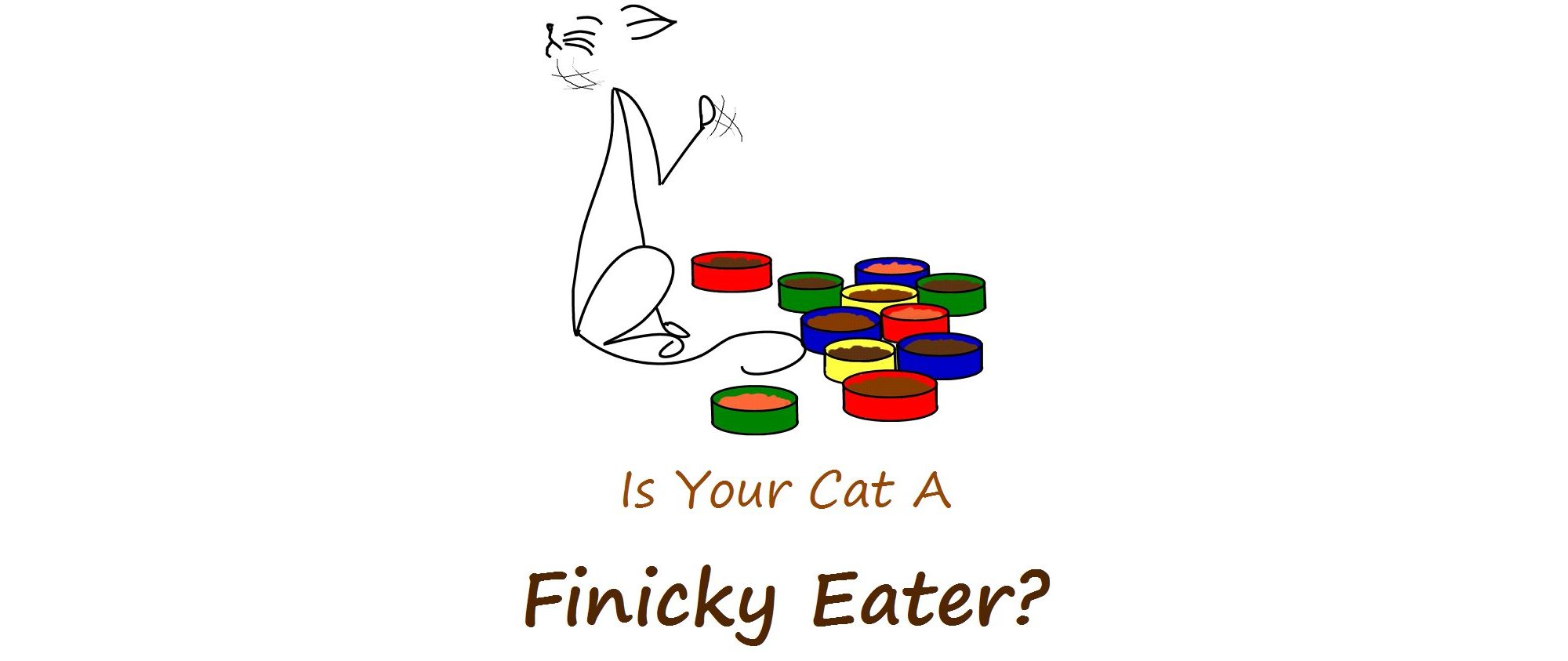Only a small percentage of cats are actually finicky in their eating habits. Sometimes a cat will suddenly stop eating a food she has eaten and enjoyed for quite a while. There often seems to be no apparent reason to you. Keep in mind that there are reasons for this, and methods exist to overcome them.
First of all, you need to rule out any possible medical problems. A number of physical problems can affect your cat’s eating habits. In fact, approximately 90% of cats with an underlying medical problem display a pickiness about food. Tooth pain, a diminished sense of smell (particularly in an older cat), respiratory infections, and kidney disease are a number of medical problems which can curb your cat’s appetite. Make an appointment with your veterinarian. Not all medical problems are obvious. Cats are notorious for hiding anything that is wrong with them and only a veterinarian exam can uncover them.
If there are no underlying medical problems, then the next step is to examine your cat’s feeding area. Look for any of the following:
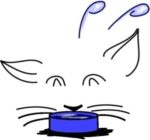 Is the feeding dish too small, and the sides too high? A cat’s whiskers are very sensitive, and if they rub the sides of the dish each time your cat takes any food from it, the cat could stop eating due to the discomfort of her whiskers brushing against the dish’s sides. (This is also true for your cat’s water dish. Your cat might resort to pawing the water out of the bowl!) Be sure to use wide, low sided, flat glass, ceramic, or stainless steel dishes.
Is the feeding dish too small, and the sides too high? A cat’s whiskers are very sensitive, and if they rub the sides of the dish each time your cat takes any food from it, the cat could stop eating due to the discomfort of her whiskers brushing against the dish’s sides. (This is also true for your cat’s water dish. Your cat might resort to pawing the water out of the bowl!) Be sure to use wide, low sided, flat glass, ceramic, or stainless steel dishes.
NOTE: Cats should be fed from bowls, not cans. Cans are too small. It is difficult for the cat to get all the food out. Make your cat’s meal pleasurable and use a bowl.
Is the dish made of plastic? Plastic holds odors from previous meals even though you clean the dishes after each use. Also, soap odors will stay in the plastic. (Use soap lightly on cat dishes; they are quite sensitive to soap.) Each time your cat eats from a plastic bowl, the odors trapped in the plastic finish will make the food more unpalatable until the cat will refuse to eat from it. Some cats may even develop skin problems from contact with plastic.
Are you feeding your cat on a paper plate? Some cats will be disturbed by the dish scooting all around and the food being pushed off the dish onto the floor and even under the plate, because the plate is too flat. A low-sided dish (preferably glass, ceramic or stainless steel) will provide a place where the food will stop moving and the cat can pick it up easier. Try eating off a flat plate using only your mouth. How easy is it to pick up the food? Paper plates and bowls may make clean-up easy for you, but can be a big problem for your cat. They slide all over the place, since they are so light-weight.
NOTE: You could use the paper bowls and place them inside a regular bowl; but you will still have to clean the bowl, as food will inevitably get under it.
 Are you keeping your cat’s dish clean? You need to wash and clean your cat’s food dish before each and every meal. The same goes for the water bowl. Change the water twice a day and clean the bowl each time. Would you eat off dishes (or drink from a glass) that still had residue and bits and pieces of food from previous meals? Cats need clean eating dishes just as we do, to remain healthy.
Are you keeping your cat’s dish clean? You need to wash and clean your cat’s food dish before each and every meal. The same goes for the water bowl. Change the water twice a day and clean the bowl each time. Would you eat off dishes (or drink from a glass) that still had residue and bits and pieces of food from previous meals? Cats need clean eating dishes just as we do, to remain healthy.
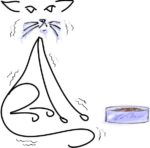 Your cat had half a can of food for her previous meal. You covered the rest of the can, as you should, and put it in the refrigerator. You take it out of the refrigerator, put it in your cat’s dish, and give it to your cat. She turns away after tasting it. The food most likely is too cold. It could also be too dry, since moisture tends to evaporate out of the food after the can has been opened. Cats prefer their food close to room temperature. Add some hot tap water; mix well, then give it to your cat. They like the moistness and the hot tap water should remove the refrigerator chill. You could also warm the food for five to eight seconds in the microwave. Just don’t let the food get hot. Cat’s won’t eat hot food either. Then add some water for moisture.
Your cat had half a can of food for her previous meal. You covered the rest of the can, as you should, and put it in the refrigerator. You take it out of the refrigerator, put it in your cat’s dish, and give it to your cat. She turns away after tasting it. The food most likely is too cold. It could also be too dry, since moisture tends to evaporate out of the food after the can has been opened. Cats prefer their food close to room temperature. Add some hot tap water; mix well, then give it to your cat. They like the moistness and the hot tap water should remove the refrigerator chill. You could also warm the food for five to eight seconds in the microwave. Just don’t let the food get hot. Cat’s won’t eat hot food either. Then add some water for moisture.
 Is the cat food stale or spoiled? An open can of cat food can go bad after a couple of days (even in the refrigerator) and will dry out. Sometimes the can of food is spoiled due to damage to the can, in which the seal has been broken. Never buy dented or damaged cans. Did you know that dry cat food can go stale once the box or bag has been opened, the seal broken? Dry cat food is no different in this respect than our own packaged food. Once you open a package of crackers or potato chips, they will become stale. We suggest that once you open the dry food packaging, transfer the contents to a container you can seal. It will remain fresh much longer. Cats are very sensitive to stale or spoiled food. They can smell the staleness much sooner than we can, since a cat’s sense of smell is so acute. They simply won’t eat it if it isn’t fresh enough.
Is the cat food stale or spoiled? An open can of cat food can go bad after a couple of days (even in the refrigerator) and will dry out. Sometimes the can of food is spoiled due to damage to the can, in which the seal has been broken. Never buy dented or damaged cans. Did you know that dry cat food can go stale once the box or bag has been opened, the seal broken? Dry cat food is no different in this respect than our own packaged food. Once you open a package of crackers or potato chips, they will become stale. We suggest that once you open the dry food packaging, transfer the contents to a container you can seal. It will remain fresh much longer. Cats are very sensitive to stale or spoiled food. They can smell the staleness much sooner than we can, since a cat’s sense of smell is so acute. They simply won’t eat it if it isn’t fresh enough.
Have you suddenly changed your cat’s diet? A bad idea. Nausea, vomiting, and diarrhea can result. This will certainly cause your cat to avoid the food. If you must change a cat’s diet, do it gradually over a period of time. Mix the new food in among the old. Increase the amount of the new food and decrease the amount of the old food gradually, until you are using only the new food. This will adjust the cat to a new taste and the cat’s digestive system will get a chance to adjust to the new food without creating problems to the cat’s digestive system.
NOTE: A cat will literally starve to death rather than eat a food she doesn’t like or want, or is new. Never force your cat to eat any food. Your cat could die.
A cat’s appetite can also be affected by stress, the same as with us. Check for the following:
Does your cat share a food dish with another cat or two? The other cat(s) may be dominating and inhibiting your cat from enjoying her food. An easy solution is to give each cat a dish of her own, and feed each cat in a different location as opposed to side by side. Dishes side by side won’t stop the problem. The other cat will simply push your cat away from her dish. If she moves to the other dish, the same thing will happen. Keep the dishes far enough apart to prevent this.
Is the eating area noisy? Most cats don’t like to eat where there is a lot of noise. Avoid areas with steady foot traffic and with noisy machines, like washers, dryers, furnaces.
 Does a child, say a toddler, disturb the cat when she is eating? Tail pulling, patting, etc. can ruin your cat’s meal. Leave the cat alone while she is eating.
Does a child, say a toddler, disturb the cat when she is eating? Tail pulling, patting, etc. can ruin your cat’s meal. Leave the cat alone while she is eating.
Has your cat recently lost another animal companion or a human friend? She will not eat as well. Cats do mourn, just as we do. In time, your cat’s appetite will pick up as she begins to accept and adjust to the loss.
Have you moved recently? This also can stress your cat enough to affect her eating.
There is also the possibility that your cat is not eating her food well or being quite picky about any canned cat food simply because you are feeding her table scraps. These taste better to your cat, but keep in mind, table scraps are not nutritionally good for cats. Your cat’s dietary requirements for good health are quite different from ours. Commercial cat foods (canned and dry) are made to give your cat 100% of all her nutritional needs. An occasional table scrap is fine, but a steady diet could make your cat ill over time. So to keep your cat healthy, feed her only food made specifically for cats. (Dog food will not meet your cat’s needs. The balance of nutrients in dog food is wrong for cats.) You can give an occasional treat as a part of your cat’s diet. Just don’t use table scraps as a replacement for commercial, well-balanced cat food.
Anything about the food–its taste, smell, texture, or temperature may cause the cat to walk away from her food dish if she is truly a finicky eater.
Many senior cats have arthritis or other health problems that can make eating difficult. Consider elevating the food dishes off the floor to reach “nose level” so your cat can get the food more easily. Some cats don’t like it when their whiskers touch the bowl’s sides, so try feeding from a saucer or a bowl with low sides.
All cats rely primarily upon their sense of smell to determine if a certain food is worth eating. They will sniff cautiously at the food before ever tasting it. If it doesn’t smell right, they will walk away. Sometimes you can encourage a reluctant eater to begin eating by dipping your finger into some of the liquid on the canned food being offered, then gently running your finger across the cat’s mouth. She will then promptly lick it off. (Keep the food dish in front of your cat.) Many times this is enough and the cat will begin to eat. We call this ‘jump-starting’.
Canned food is favored by most cats because it more closely resembles the cat’s natural prey. Canned food has a much higher water content than dry food, and thus helps prevent urinary tract problems.
Dry food, with its very low water content, can cause the cat’s urine to become relatively concentrated and to cause crystals to form in the bladder. These crystals cause a very painful obstruction in the urethra and can stop the flow of urine completely. Emergency veterinarian care and often surgery is required immediately or the cat could die.
Fortunately, the salt level in dry food is high enough to encourage cats to drink more water. This lowers the chance of crystals forming in the bladder.
It is best to offer both canned and dry foods.
Preventing finickiness in your cat is easier than trying to cure it. Feed kittens and young cats a variety of foods right from the beginning. Using both canned and dry food varieties of different shapes and sizes is wise. They learn that there are many interesting and tasty flavors that come in different textures, shapes and sizes. We feed a large variety of commercial cat foods, both canned and dry. Our cats are always eager to try any new food we introduce. Since such a large variety is always used, we don’t have any adverse reactions to any new type offered. Of course, their regular variety is always present when a new kind is offered.
If your cat is already finicky, you can try several things to change this. First off, make sure the cat is eating in a comfortable, stress-free and safe area. Some cats prefer your company when they are eating. Try talking gently to your cat when she goes over to eat. Stay near, if this is what keeps your cat eating.
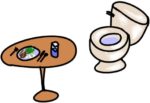 NOTE: Please never place your cat’s eating and drinking area next to a litter pan. Would you like to eat your meals next to your toilet?
NOTE: Please never place your cat’s eating and drinking area next to a litter pan. Would you like to eat your meals next to your toilet?
Sometimes it is necessary to stimulate your cat’s appetite, especially if she is or has been ill. If your cat likes tuna, pour a little tuna juice over some canned tuna cat food.
The taste and smell of food is enhanced when it is warm. Warm your cat’s food to make it more palatable. Just keep in mind not to make it hot. Cats prefer their food close to room temperature. Food that is too hot will make your cat turn away.
We tend to use some canned kitten formula, warmed a bit, when any of our cats become ill and slow down or stop eating. This is gentle to their digestion, loaded with nutrients, and most cats love it. Don’t over-do with the kitten formula, though. It is very fattening, and too much can cause adult cats diarrhea, but is a good appetite awakener and gives a sick cat nutrients she wouldn’t get otherwise. There is also a canned milk called “Cat-Sure” for cats seven years and older. Eating provides energy that helps fight off any illness. Cream cheese also is a good appetite stimulant. A little dab can start up the appetite. Cream cheese is also a good treat or reward for good behavior.
We also use some dry kitten chow with sick cats and those who don’t eat well. Again, most cats love kitten chow. Just remember, it too can be very fattening and not to over-use it. Mixing a bit in with your cat’s regular dry food can start her eating well. Slowly, replace the amount of kitten chow over a period of time until your cat is not receiving any, but is still eating her dry food.
Baby food can also be used to stimulate a cat’s appetite. Just be very careful with this one. Be sure that the baby food does not contain any onion powder. Onions are dangerous for cats to ingest. In quantity, onions can cause a blood disorder called Heinz-body anemia. You don’t want large veterinarian bills. Your veterinarian can also supply you with a vitamin-rich paste that comes in a tube (a high calorie nutritional supplement, for cats & dogs). You simply squirt out about a half-inch onto your finger and carefully wipe it on the inside of her mouth. Most cats don’t mind the taste of this too much; sometimes you can wipe it on the back of a front paw and they’ll lick it off. This paste is very good for putting weight on thin cats. It is good to use on a cat that has stopped eating. The nutrients in it may help keep them alive. If she refuses it, you can put about an inch in a needle-less syringe and carefully squirt it into the back of her mouth, being careful not to go too far back or too fast and choke her. Sometimes a cat will be determined to spit it out, and you’ll have to put a hand under her chin to keep her mouth closed while keeping her nose pointed upwards, until she swallows it.
NOTE: If your cat’s eating habits change and she doesn’t eat for twenty-four hours or more, call your veterinarian promptly. A cat’s liver will begin to shut down and can cause death if the cat doesn’t eat for three days.
Eating should be a pleasure for your cat, just as it is for us.
1-28-2017bct
